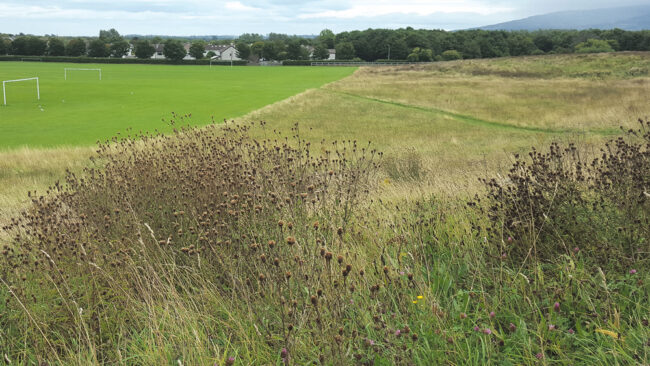

Nature on our doorsteps: Tracking the seasons in our flowering meadows
Rosaleen Dwyer is the County Heritage Officer at South Dublin County Council – every week she gives us an insight into nature on our doorsteps and the beautiful biodiversity of its plants and wildlife.
THE colourful wildflower meadows in our parks have finished flowering by now and some of these have been cut back and the grass has been removed.
Other areas will not be cut, and the brown grasses, seedheads and stalks will be left to stand over winter.
The changing colours in our wildflower meadows track the passing seasons of the year.
It begins in early spring with the arrival of carpets of yellow Cowslips and Dandelions.
These mainly dominate the meadows between March and May, providing abundant nectar and pollen for early insects.
By late May and early June, the red, white, and yellow colours of Clover and Birds-foot Trefoil add to the meadow’s palette, and offer even more nectar and pollen to bees, butterflies and other insects.

Uncut meadows with stalks and seedheads offer an interesting contrast to shorter green grass in the parks
By mid-June, tall Ox-eye Daisies bring scattered patches of white to some of the drier meadows, while in damper areas, swathes of yellow Meadow Buttercups dominate.
Pink and purple Vetches also add colour, clinging onto neighbouring plants with their curling tendrils as they reach up to the light.
Grasses too are flowering in June and July, and while their tiny and discrete flowers are unnoticed by many of us, the many shapes of their delicate flowering heads add wispy architectural interest to the colourful meadows.
By August and September, the earlier meadow flowers have set seed.
The colour purple is now more frequent as Thistles and Knapweeds appear, while yellow again reappears in the daisy-like flowers of Ragwort.
By October, the meadow’s summer colours are replaced by the browns, beiges and creams of dying plants and grasses.
Meadows that were cut in September will grow green again before winter, while the browns of the uncut areas will offer a nice contrast in colour and texture to the short green grass.
While the uncut meadows may look a bit forlorn to us, they will continue to work for biodiversity over the winter, providing critical hibernation places for adult insects and larvae until next spring.

